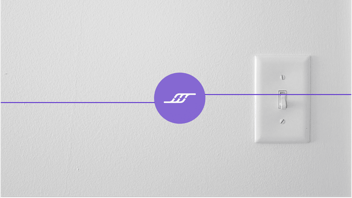Mark Cunningham joined Infostrux CEO, Goran Kimovski (Kima) for a live fireside chat. During the discussion, they covered a wide array of topics including the history of Business Intelligence, the Data Analytics industry, and technology trends that shaped and will continue to shape the industry.
![]() Kima: As you know, we are partnering with Snowflake, and they made a big splash with their IPO. They’ve been pushing this narrative and vision of the Data Cloud, and they’re executing pretty well on that vision in my view. The Data Cloud is a platform in its own right – it’s really a global network where you can do data sharing. You can exchange data safely and securely and all that. The CEO of Snowflake has a big vision of businesses running their entire supply chain, all their vendor relations, all their partnerships, and all the data exchange on that Data Cloud.
Kima: As you know, we are partnering with Snowflake, and they made a big splash with their IPO. They’ve been pushing this narrative and vision of the Data Cloud, and they’re executing pretty well on that vision in my view. The Data Cloud is a platform in its own right – it’s really a global network where you can do data sharing. You can exchange data safely and securely and all that. The CEO of Snowflake has a big vision of businesses running their entire supply chain, all their vendor relations, all their partnerships, and all the data exchange on that Data Cloud.
For me as an entrepreneur building a business around that, obviously it’s very compelling. So I want to ask you if that resonates with you, that notion of a global network where data gets exchanged between businesses and what potential you see if this gets realized at a global scale?
![]() Mark: You’re preaching to the choir on cloud. I think the friction that has been in the BI space, in the analytics space in general, a lot of it has been mostly related to where the data is residing, the complexity in the number of silos, and the fact that we have most of the data on prem.
Mark: You’re preaching to the choir on cloud. I think the friction that has been in the BI space, in the analytics space in general, a lot of it has been mostly related to where the data is residing, the complexity in the number of silos, and the fact that we have most of the data on prem.
Hopefully we’re moving into the cloud. If we imagine a perfect world where all the data was in the cloud, everything, all our systems record, all of our analytic data, everything was living in a cloud we could easily use services to talk to each other and have it in one ecosystem if you will. I think this will open the floodgates for new opportunities in the BI tooling, but I do think that there’s work to be done in the sense of we still have to get the majority of the enterprises that are sitting out there that are still living in sort of on-premise land to get their data there as well because the complexity there is about dragging all this data around. There are technologies and tooling that are doing that now, but it’s still creating friction. So in a perfect world, if everybody just used cloud applications, it would cause less friction and less complexity. That was something we did back in Indicee, we spent a lot of our time munging data from on prem and cloud, flat files — it was just complex.
There was a time where it was like, why don’t we just forget about on prem and only focus on cloud vendors? We didn’t do that because the majority of the data was still locked up on prem, so it would have been very hard to go win customers that way if we said, oh you have data on prem, sorry we are not your guys.
Today, I think you could do that. You could probably say, ‘no, we’re only going to work with people that have their data and the cloud. If you don’t have the data in the cloud, we can’t do anything for you.’ If you’re a small business you can easily do that.
So when is our iPhone moment going to happen?
There are going to be more Snowflakes. They had this massive IPO, they are a great success story. Too bad Coinbase came along, they got beat on that one. But the reality is that they demonstrated that there’s a vision there and people believe in that vision. Meanwhile, Silicon Valley is spinning their wheels on Hadoop and things that are sort of going nowhere and then Snowflake comes along and everybody is like ‘wow’. So I think that really shook up the industry and I think there’s going to be more players that will come along.
As the data cloud becomes more prevalent, as well as Covid and the acceleration of digital transformation is rapidly moving data more into the cloud, then I think it creates an opportunity for the BI vendors to then say, well how do we get into a world where we can do what Snowflake did, but on the tooling side.
I think there are changes that can happen over there just in the way we package and price our software, which I think is living in dinosaur land. That needs to be completely changed because it’s creating friction. Then different types of architectures need to exist to be able to truly live in the cloud and be able to make data flow easier.
![]() Kima: I can share an anecdote that I think is driving some of the trend about being able to use the cloud for exchanging data, not necessarily reporting on data, which is already in the cloud, the data may arrive in the cloud through connectors and ingestions. We are working with a number of fintech organizations, they’re sharing with us that the big banks that they’re selling into and partnering with are demanding that they use Snowflake for exchanging data instead of shipping CSV files, setting up FTPs, and running ETL pipelines. The banks are saying, if you’re going to be a supplier or before we partner with you, you have to use Snowflake for interacting and sharing your data and accessing my data. This is interesting, I’ve never seen that before.
Kima: I can share an anecdote that I think is driving some of the trend about being able to use the cloud for exchanging data, not necessarily reporting on data, which is already in the cloud, the data may arrive in the cloud through connectors and ingestions. We are working with a number of fintech organizations, they’re sharing with us that the big banks that they’re selling into and partnering with are demanding that they use Snowflake for exchanging data instead of shipping CSV files, setting up FTPs, and running ETL pipelines. The banks are saying, if you’re going to be a supplier or before we partner with you, you have to use Snowflake for interacting and sharing your data and accessing my data. This is interesting, I’ve never seen that before.
![]() Mark: That’s a big win for Snowflake on those types of movements.
Mark: That’s a big win for Snowflake on those types of movements.




